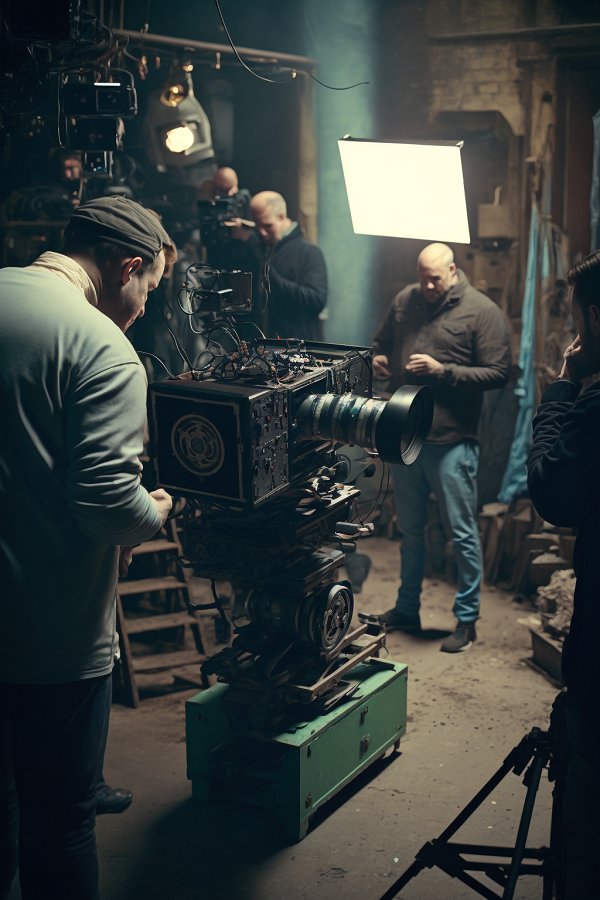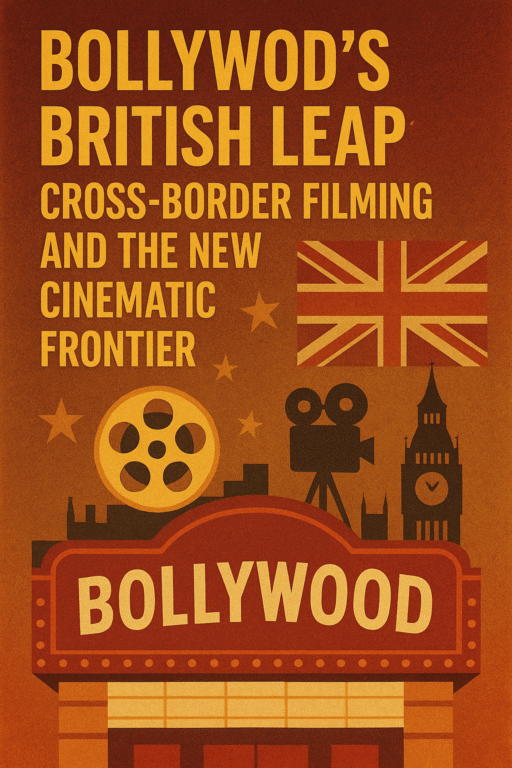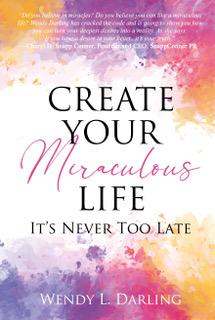TV & MOVIES
Behind the Lens: The Ethics and Artistry of Film Adaptations of Memoirs and Autobiographies

Behind the Lens: The Ethics and Artistry of Film Adaptations of Memoirs and Autobiographies
Memoirs and autobiographies have always been a source of inspiration for filmmakers. The real-life stories of individuals can be captivating, emotional, and relatable. And when those stories are brought to the big screen, they can have a powerful impact on audiences around the world.
But adapting a memoir or autobiography into a film is no easy task. Filmmakers must balance the need to stay true to the source material while also making a compelling movie that will resonate with viewers. Some adaptations have been successful, while others have fallen flat. In this article, we will explore some of the most notable film adaptations of memoirs and autobiographies and examine what makes them successful.
The challenge of adapting memoirs and autobiographies
When a filmmaker decides to adapt a memoir or autobiography into a film, they face several challenges. The first challenge is to capture the essence of the story and the voice of the author. Memoirs and autobiographies are personal accounts of real-life experiences, and the author’s voice is an essential element of the story.
- “The autobiographical element in a work of art is always a betrayal. You are stealing someone else’s life.” – Julian Barnes
Filmmakers must also decide which parts of the story to include in the film and which to leave out. Memoirs and autobiographies often cover a long period of time, and it can be challenging to condense that into a two-hour movie. Filmmakers must make choices about what to focus on and what to cut.
Another challenge is to make the story cinematic. Memoirs and autobiographies are often introspective and reflective, which can be difficult to translate onto the big screen. Filmmakers must find a way to make the story visually interesting and engaging.
But when filmmakers are successful in adapting memoirs and autobiographies into films, the results can be incredible. Here are some of the most successful film adaptations of memoirs and autobiographies.
“The Pursuit of Happyness” (2006)
“The Pursuit of Happyness” is based on the memoir of the same name by Chris Gardner. The film stars Will Smith as Gardner, a struggling salesman who becomes homeless with his young son. The story follows Gardner’s journey as he tries to provide for his son and build a better life for himself.
One of the reasons “The Pursuit of Happyness” is so successful is that it stays true to the emotional core of Gardner’s story. The film captures the struggles and hardships Gardner faced while also showing the love and dedication he had for his son. Will Smith’s performance is also a standout, and he brings a depth and vulnerability to the role that makes the character feel real and relatable.
- “Adapting a book into a movie is like turning a steamboat into a battleship: some things are gained and some are lost.” – Larry McMurtry
“The Diary of a Teenage Girl” (2015)
“The Diary of a Teenage Girl” is based on the graphic novel of the same name by Phoebe Gloeckner. The film follows 15-year-old Minnie as she navigates her way through adolescence in 1970s San Francisco. The story is told from Minnie’s perspective, and the film explores themes of sexuality, identity, and coming of age.
One of the reasons “The Diary of a Teenage Girl” is so successful is that it captures the spirit and energy of the graphic novel. The film uses animation and visual effects to bring Minnie’s inner thoughts and fantasies to life, making the story feel vibrant and alive. The performances are also excellent, particularly Bel Powley as Minnie, who brings a raw and honest portrayal of teenage angst and insecurity.
- “In order for a film adaptation to be successful, it must capture the heart and soul of the story, as well as the voice of the author.” – Quentin Tarantino
“The Wolf of Wall Street” (2013)
“The Wolf of Wall Street” is based on the memoir of the same name by Jordan Belfort. The film stars Leonardo DiCaprio as Belfort, a stockbroker who rises to power and wealth in the 1990s but is eventually brought down by his own greed and corruption.
One of the reasons “The Wolf of Wall Street” is so successful is its unapologetic portrayal of Belfort’s excess and debauchery. The film is fast-paced, frenetic, and unrelenting, capturing the hedonistic lifestyle of the stockbroker and his colleagues. DiCaprio’s performance is also a standout, and he brings a manic energy to the role that makes the character both charismatic and repulsive.
“The Glass Castle” (2017)
“The Glass Castle” is based on the memoir of the same name by Jeannette Walls. The film stars Brie Larson as Walls, a successful journalist who reflects on her unconventional upbringing with her parents, who were nomadic and struggled with alcoholism and poverty.
One of the reasons “The Glass Castle” is so successful is that it captures the complex dynamics of Walls’ family. The film explores themes of love, loyalty, and forgiveness, while also depicting the dysfunction and abuse that Walls and her siblings experienced. Brie Larson’s performance is also excellent, and she brings a vulnerability and sensitivity to the role that makes the character feel authentic and relatable.
“Wild” (2014)
“Wild” is based on the memoir “Wild: From Lost to Found on the Pacific Crest Trail” by Cheryl Strayed. The film stars Reese Witherspoon as Strayed, a woman who sets out to hike the Pacific Crest Trail as a way of healing from the loss of her mother and the dissolution of her marriage.
One of the reasons “Wild” is so successful is its depiction of Strayed’s journey of self-discovery. The film captures the physical and emotional challenges she faces on the trail, while also exploring the memories and experiences that led her there. Witherspoon’s performance is also excellent, and she brings a depth and nuance to the role that makes the character feel both flawed and inspiring.
“12 Years a Slave” (2013)
“12 Years a Slave” is based on the memoir of the same name by Solomon Northup. The film stars Chiwetel Ejiofor as Northup, a free Black man who is kidnapped and sold into slavery in the 1840s.
One of the reasons “12 Years a Slave” is so successful is its unflinching portrayal of the brutality and inhumanity of slavery. The film does not shy away from the violence and abuse that Northup and other enslaved people experienced, making it a difficult but necessary watch. The performances are also excellent, particularly Ejiofor’s, who brings a quiet strength and resilience to the role.
- “A good adaptation is one that stays true to the spirit of the book, but also takes advantage of the unique qualities of film as a medium.” – John Green
Conclusion
Adapting memoirs and autobiographies into films is a challenging task, but when done successfully, it can result in powerful and moving movies. The best adaptations stay true to the essence of the story and the voice of the author, while also making the story cinematic and engaging. Whether it’s the unrelenting excess of “The Wolf of Wall Street” or the introspective journey of “Wild,” the films on this list capture the emotional core of their source material and provide a glimpse into the lives of real people.
TV & MOVIES
The Rise of OTT as the New Box Office

The Rise of OTT as the New Box Office
Once viewed as an alternative platform for offbeat cinema, OTT streaming has now become the new box office. Services like Netflix, Amazon Prime Video, Disney+ Hotstar, and JioCinema have blurred the lines between traditional film releases and digital premieres. Films now transition from theatre to streaming in record time, capitalizing on binge-hungry audiences. For stars, producers, and even entertainment journalists, success metrics have changed — viewership minutes are replacing weekend grosses. The result: OTT sits at the center of India’s entertainment economy, steering ad spends, influencing production budgets, and shaping the stories greenlit each quarter.
Entertainment News in the Age of Instant Streaming
In the digital ecosystem, entertainment journalism has transformed from the red carpet to the real-time feed. Every Friday now brings not just a theatrical release but multiple digital premieres across languages. Reporters have pivoted from set visits to decoding content strategy and from star gossip to viewership data. The new buzzwords: streaming engagement, AI-driven recommendations, and cross-platform visibility. Newsrooms like LiveNewsVault Entertainment and partners at CarryOnHarry now run OTT review dashboards, instant alerts, and trend explainers as core products.
Regional Powerhouses Take the Lead
India’s OTT revolution is inherently multilingual. Regional industries — Tamil, Telugu, Malayalam, Bengali, and Marathi — are not secondary players but growth engines. Breakout series and films prove that strong storytelling transcends language; national audiences discover talent via dubs, subs, and algorithmic curation. As fame democratizes, coverage widens: interviews and reviews from Kochi to Kolkata now trend pan-India within hours.
From Red Carpets to Reels: Celebrity PR Gets a Digital Makeover
Public relations and celebrity branding have undergone a dramatic shift. Actors cultivate fan engagement through behind-the-scenes reels, live Q&As, and platform-native collaborations. Reporters have become hybrid creators — part journalist, part analyst. Innovative campaigns (password-gated “secret reels,” ARG-style teasers, fan-first premieres) show how marketing has evolved for the scroll era: faster, smarter, and multimedia-first.
The Future: Where Algorithms Meet Art
As AI-driven curation becomes integral to discovery, the future of entertainment news is personalization. Editors increasingly collaborate with analytics to predict which categories — crime thriller, social drama, or period biopic — will surge. Independent desks leverage similar tools to deliver hyper-personalized reviews, streaming alerts, and creator spotlights tailored to micro-audiences. The story no longer ends at the screen; it continues in how we cover the screen.
Conclusion: The Digital Stage Expands
OTT has reinvented both entertainment and journalism. What used to be a Friday column is now a seven-day newsroom linking creators, audiences, and platforms through one digital thread. The future of entertainment news is streaming-first, global-minded, and endlessly connected. The screens may be smaller — the stories are larger than ever.
TV & MOVIES
Bollywood’s British Leap: Cross‑Border Filming and the New Cinematic Frontier

Bollywood’s British Leap: Cross‑Border Filming and the New Cinematic Frontier
Behind this move lie incentives, economic strategy, and symbolic ambition. The question now: can Bollywood transplant its cinematic heart without losing its cultural soul?
The announcement came via the corridors of power: British Prime Minister Keir Starmer revealed during his India visit that three Bollywood productions will be made in Britain from early 2026.
Central to the pact is Yash Raj Films, which had paused major UK shoots for eight years, now returning as the anchor for this cross‑border experiment.
Expected to generate around 3,000 jobs, the deal is as much diplomatic optics as industrial infrastructure.For Bollywood observers, it is a litmus test: can Indian storytelling adapt to foreign soil without feeling foreign?
The Vanguard: Yash Raj Leads the Charge
Yash Raj Films (YRF), long a stalwart of big‑scale Hindi cinema, is the first name attached to this UK dream.With its track record of lavish musicals, romance, and action — from Dilwale Dulhania Le Jayenge to Pathaan — YRF carries both brand capital and creative weight.Their reentry into Britain marks more than nostalgia: it signals a strategic pivot toward outward expansion.
But leading this frontier is no easy role. They will need to balance spectacle and intimacy, and reconcile Indian aesthetics with British logistical realities.
Incentives, Co‑Productions & Tax Mechanics
The financial architecture is critical. As part of the agreement, Indian and UK bodies will pursue co‑production treaties, resource sharing accords, and reciprocal benefits.UK’s creative industries already contribute around £12 billion annually and support ~90,000 jobs — the British case is that international shoots strengthen local ecosystems.Rebates, studio partnerships (e.g. Pinewood, Elstree) and infrastructure support are expected to sweeten the deal.But the devil is in execution: permissions, union rules, import logistics, film quotas, and cross‑border revenue sharing could complicate creative freedom.
Opportunities (and Tensions) for UK Crews & Cultural Exchange
Locally, film professionals in the UK see a surge of opportunity: from lighting crews to VFX houses, from set construction to post‑production houses. The promise of roughly 3,000 new roles is a significant magnet.Yet the collaboration demands sensitivity: will Indian team leads integrate, or default to bringing crews from India? Will local talent be collaborators or footnotes?
There is also the cultural friction of narratives: Indian stories often depend on linguistic nuance, emotional idioms, and socio‑cultural reference. Translating such texture across geographies — e.g. a diasporic scene set in Leicester, or a heritage plot in rural India but shot in the Cotswolds — requires careful calibration.
Comparative Lens: UK, US, Middle East & Southeast Asia
Bollywood has already flirted with foreign stages: films set in New York, Dubai, London, Malaysia, and Bangkok. But these were episodic — song sequences or a few days’ location work.
What’s novel now is full production immersion: shooting entire blocks abroad, and using foreign studios as main hubs rather than occasional backdrops.The US has always been a lure, but bureaucratic cost, limited subsidy infrastructure, and union complexity have tempered enthusiasm. The Middle East (Dubai, Abu Dhabi) offers tax breaks and modern facilities, but lacks the anchor of diaspora and cultural familiarity. Southeast Asia has drawn Indian shoots for lower cost, but not the prestige of UK or US branding.The UK’s strength lies in infrastructure, cultural connectivity (Indian diaspora, shared colonial history), institutional film bodies, and scenic legacy. If it succeeds, we may witness a regional shift: Bollywood’s second “home” might well be London.
For now, the journey begins: the lens crosses the sea, and the world watches whether Bollywood’s soul can find new soil and still breathe.
-

 Editor's Choice3 months ago
Editor's Choice3 months agoRanveer Singh and Deepika Padukone Reunite for New Romantic Comedy
-

 Editor's Choice8 months ago
Editor's Choice8 months agoReview: Rekhachithram (2025) – A Masterful Blend of Mystery and Redemption
-

 Authors and Artists4 years ago
Authors and Artists4 years agoCreate Your Miraculous Life: It’s Never Too Late Wendy L. Darling
-

 People's Choice4 months ago
People's Choice4 months agoBollywood in August 2025: A Landscape of Sequels, Social Commentary, and Star Power






